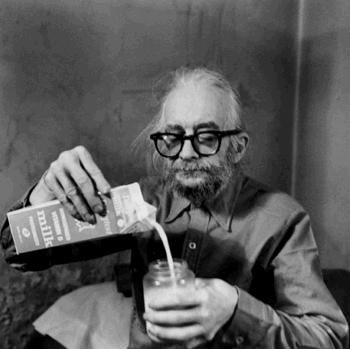“Grief” - Elizabeth Barrett Browning
“I tell you, hopeless grief is passionless;
That only men incredulous of despair,
Half-taught in anguish, through the midnight air
Beat upward to God's throne in loud access
Of shrieking and reproach. Full desertness,
In souls as countries, lieth silent-bare
Under the blanching, vertical eye-glare
Of the absolute Heavens. Deep-hearted man, express
Grief for thy Dead in silence like to death--
Most like a monumental statue set
In everlasting watch and moveless woe
Till itself crumble to the dust beneath.
Touch it; the marble eyelids are not wet:
If it could weep, it could arise and go.”
That only men incredulous of despair,
Half-taught in anguish, through the midnight air
Beat upward to God's throne in loud access
Of shrieking and reproach. Full desertness,
In souls as countries, lieth silent-bare
Under the blanching, vertical eye-glare
Of the absolute Heavens. Deep-hearted man, express
Grief for thy Dead in silence like to death--
Most like a monumental statue set
In everlasting watch and moveless woe
Till itself crumble to the dust beneath.
Touch it; the marble eyelids are not wet:
If it could weep, it could arise and go.”
Shock, eternal resignation, a paralyzing stillness. These are the things that Browning recognizes in her examination of grief. We are not those who discredit and disbelieve despair, we, who know it well, saturate ourselves in it, and drown without noise, without struggle. We do not long for normalcy, nor verdant emotion, we accept a tragic fate that leaves us broken, with the rationality of fatigue, of a listlessness that extends into unknown depths. It permeates, it slowly weathers away intricate nerve endings, it inhabits and hijacks our very bodies, until truth becomes vacant, and form barred. Until the movement of this suffocating mass becomes as physically impossible as a statue shedding marvelous tears. Do I know grief? Only as one knows smelling, not all possess the sense, but even those who do could never describe it accurately. Browning comes close, but she could never translate this poem to those who have never felt what she has experienced, just as I could never explain the smell of infiltrating smoke or creeping mold to someone who has never used their nose. Like a parasite it feeds on our mere existence, and we solemnly accept this relationship, as we dwindle into dehydrated fruit. Like a line, imaginary, endless, and impossible we remain in these purgatories, indeed until we “crumble.”
I could go on to talk about how Browning uses a seamless a-b-b-a-a-b-b-a-c-d-e-c-d-e rhyme scheme, using true, and slant rhymes to make the poem less artificial and intrusive, but I cannot. I believe that a mindless praise and analysis of such would be disrespectful and almost inappropriate. The work has affected me greatly, and that's all that really needs to be said. Browning has a gift for profound authenticity and connection, as someone who can relate to the work, and collapse in its verses, I can honestly say that such skill is welcome in composition.
